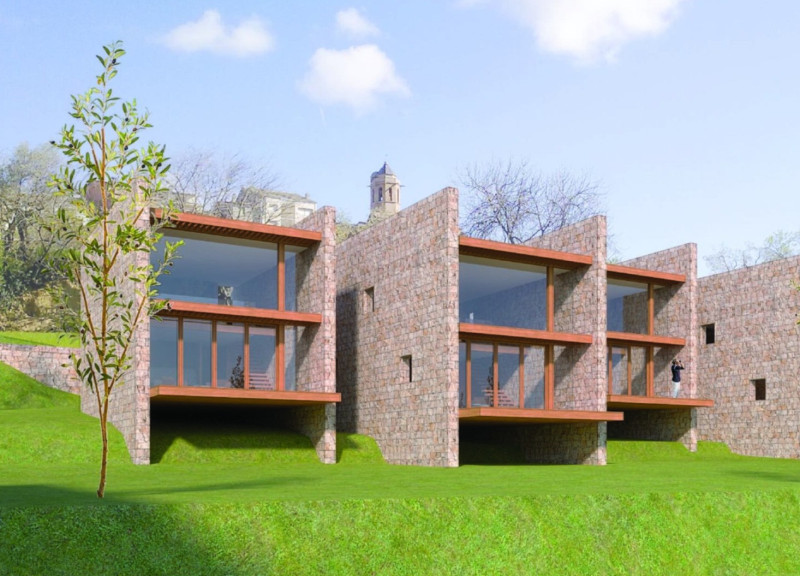5 key facts about this project
The design fosters an artistic ecosystem where various components interact cohesively. The layout includes dedicated artist residences, collaborative workshops, and communal spaces for education and events. The incorporation of pathways encourages movement and interaction, facilitating a sense of community among users. The architectural solutions aim to create a space that supports both individual reflection and collective creativity.
Sustainable Design Approaches
La Rama's architectural design integrates sustainable materials and techniques. The primary materials consist of natural stone, locally sourced to harmonize with the surrounding landscape. Wood features prominently in structural elements and finishes, providing warmth and tactile qualities throughout the space. Large glass windows and openings create a strong visual connection to the outdoors, enhancing user experience and promoting natural light.
Unique design strategies include a stilt construction method, which minimizes land impact and allows the building to blend seamlessly into its environment. Features such as rainwater harvesting systems contribute to the project's ecological responsibility and resource efficiency. The landscaping approach preserves existing vegetation while promoting biodiversity through the introduction of native plant species, enhancing the ecological quality of the site.
Spatial Organization and Functionality
The spatial organization of La Rama is purposefully structured to meet the needs of artists and the community. Private artist residences offer tranquil settings for individual work, while workshops and communal areas are designed for collaborative activities and educational programs. The plaza serves as a multifunctional gathering space for various community events, fostering cultural exchange and interaction.
The architecture promotes adaptability, allowing spaces to evolve with the needs of users. This flexibility ensures that La Rama remains a vibrant hub for artistic and educational endeavors over time. By focusing on a combination of sustainability, functionality, and cultural integration, the project establishes itself as a resource for both artists and the local community.
To explore the intricate details of La Rama further, including architectural plans, sections, and overall design ideas, we encourage readers to review the project presentation. Understanding its unique architectural elements will provide deeper insights into the project's role within the community and its innovative design solutions.


























